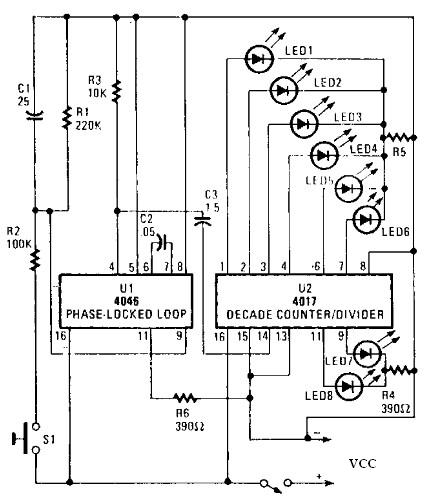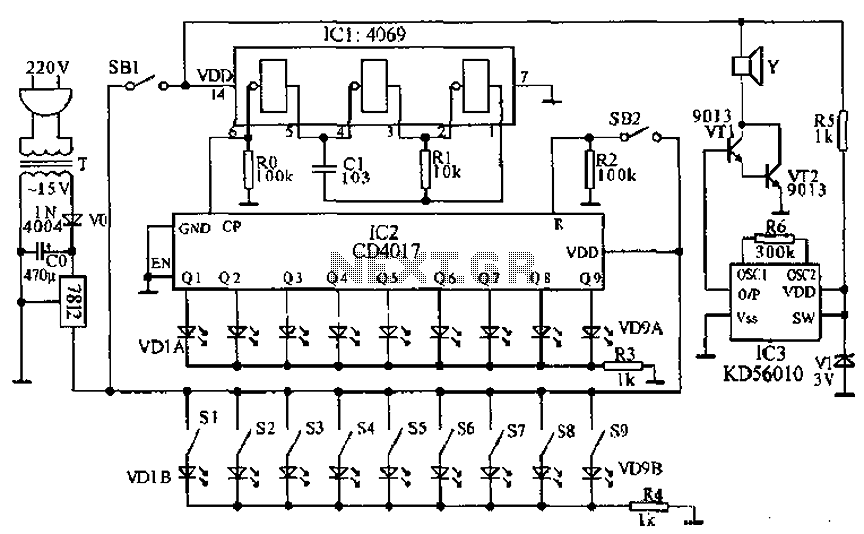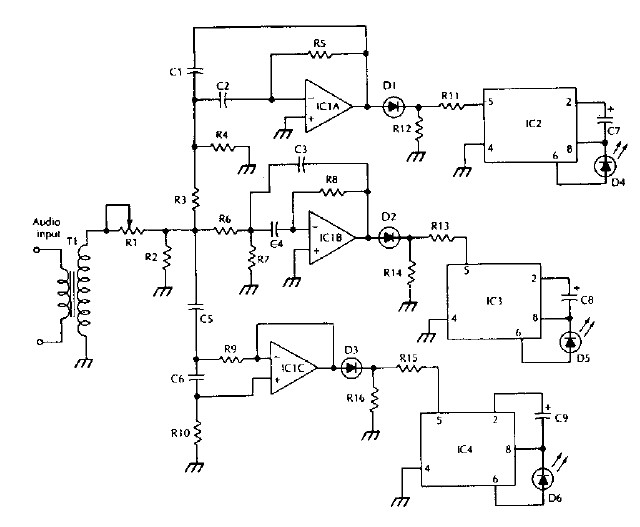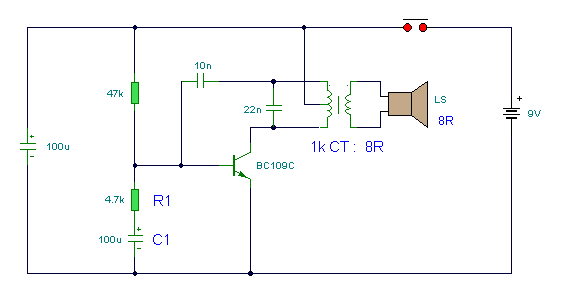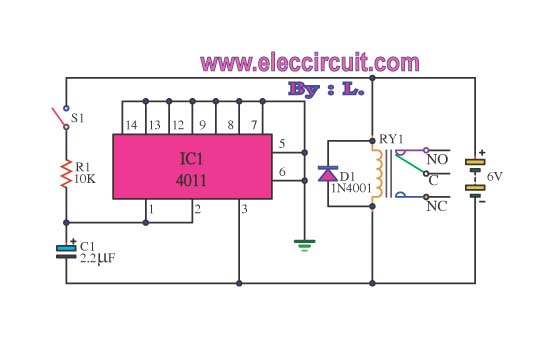
Inductive electronic doorbell 1
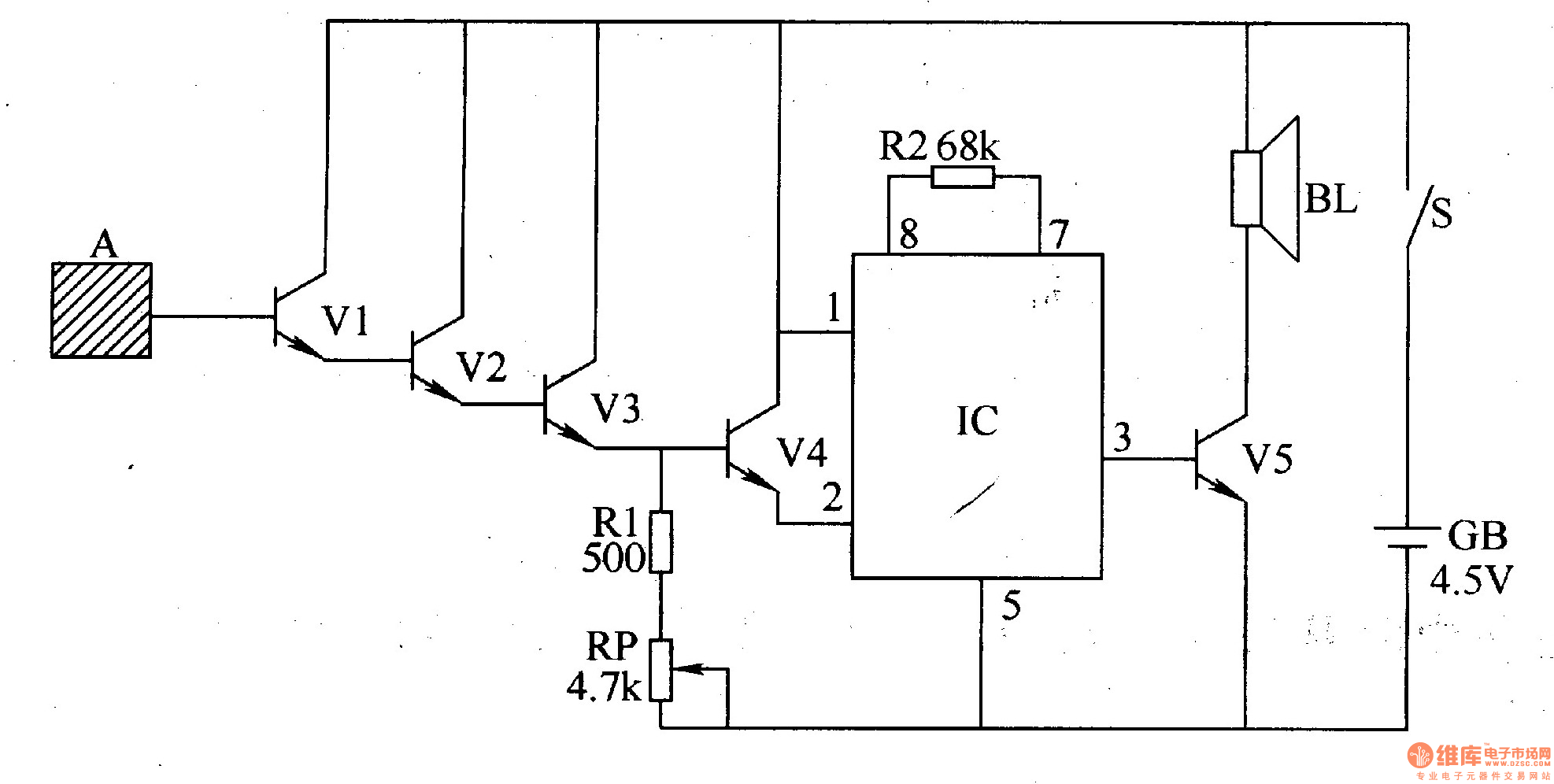
The inductive electronic doorbell circuit consists of an inductive electronic switch and a music generator circuit, as illustrated in Figure 3-115. The inductive electronic switch circuit includes an inductive electrode A, transistors V1-V4, a resistor R1, and a potentiometer RP. The music generator circuit is based on a music integrated circuit (IC), along with resistors.
The inductive electronic doorbell circuit operates by utilizing an inductive switch that detects the presence of a magnetic field, which activates the music generator upon detection. The inductive electrode A serves as the sensing element that responds to the magnetic field generated by a nearby object, such as a person approaching the door. When the magnetic field is detected, it triggers the transistors V1-V4, which act as switches to control the flow of current through the circuit.
The resistor R1 is critical in limiting the current to the transistors, ensuring they operate within safe parameters. The potentiometer RP allows for adjustment of the sensitivity of the inductive switch, enabling customization based on environmental conditions or user preferences.
The music generator circuit, which is driven by the music integrated circuit, produces a melody or sound when the inductive switch is activated. This circuit typically includes additional components such as capacitors and resistors to shape the audio output and ensure proper functioning of the IC. The combination of these elements creates an effective and reliable doorbell system that enhances user experience with its audible alert feature.
Overall, the inductive electronic doorbell circuit exemplifies a practical application of inductive sensing technology and audio output integration, making it a useful addition to modern home automation systems.The inductive electronic doorbell circuit is composed of the inductive electronic switch and music generator circuit, and it is shown in Figure 3-115. Inductive electronic switch circuit is composed of the inductive electrode A, transistor Vl-V4 and the resistor R1, potentiometer RP components.
Music generator circuit by the music integrated circuit IC, resi.. 🔗 External reference
The inductive electronic doorbell circuit operates by utilizing an inductive switch that detects the presence of a magnetic field, which activates the music generator upon detection. The inductive electrode A serves as the sensing element that responds to the magnetic field generated by a nearby object, such as a person approaching the door. When the magnetic field is detected, it triggers the transistors V1-V4, which act as switches to control the flow of current through the circuit.
The resistor R1 is critical in limiting the current to the transistors, ensuring they operate within safe parameters. The potentiometer RP allows for adjustment of the sensitivity of the inductive switch, enabling customization based on environmental conditions or user preferences.
The music generator circuit, which is driven by the music integrated circuit, produces a melody or sound when the inductive switch is activated. This circuit typically includes additional components such as capacitors and resistors to shape the audio output and ensure proper functioning of the IC. The combination of these elements creates an effective and reliable doorbell system that enhances user experience with its audible alert feature.
Overall, the inductive electronic doorbell circuit exemplifies a practical application of inductive sensing technology and audio output integration, making it a useful addition to modern home automation systems.The inductive electronic doorbell circuit is composed of the inductive electronic switch and music generator circuit, and it is shown in Figure 3-115. Inductive electronic switch circuit is composed of the inductive electrode A, transistor Vl-V4 and the resistor R1, potentiometer RP components.
Music generator circuit by the music integrated circuit IC, resi.. 🔗 External reference
